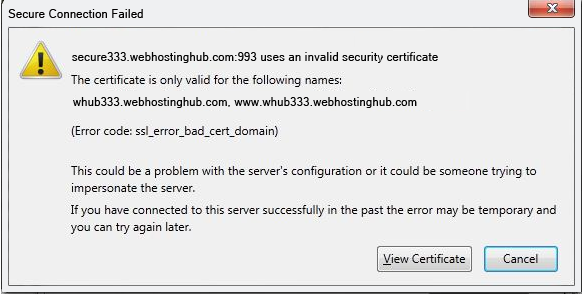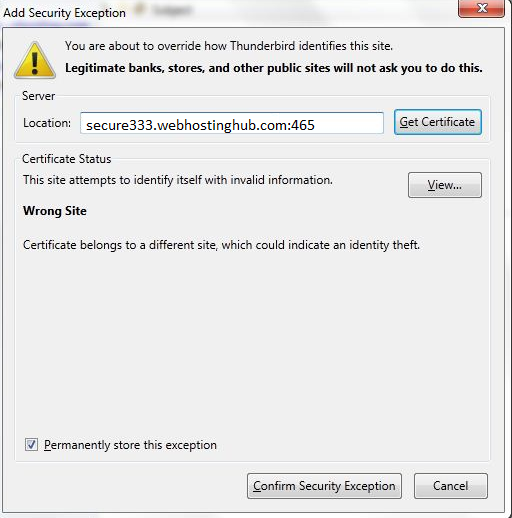How to deal with Thunderbird SSL warnings
When you use Thunderbird as your email client, you have the option to use the SSL settings for sending and receiving email. The following article will explain the possible messages you may see and the action you can take if you are not using SSL, or if there is a problem with the certificate used with SSL connections.
Warning screen that appears when you setup emails without the SSL settings

When you create an email account in Thunderbird, it will default to use the secure settings for email. However, if you change it to use the non-secure settings, then when you save the settings you will see the warning message as displayed in the screenshot on the right. In order to find the correct email settings for the email protocol of your choice (either POP3 or IMAP), check out How to find my email settings.
Warning screens that appear when a certificate setting has changed


SSL certificates are good for a finite length of time. Typically, they must be renewed within a year or two. The primary reason they expire is to help keep them secure. If the certificate is changed on the server, then you will need to accept the updated certificate the next time that Thunderbird connects to the email server. An updated certificate will disrupt Thunderbird from receiving or sending emails until the email client is updated with the latest certificate. The instructions below assume that you're already logged into your Thunderbird email client.
NOTE: An expired certificate will also generate this message. It will not function correctly until it has been updated.
If you are having problems with a certificate when you're trying to access email with Thunderbird, follow the steps below:
- Click on View certificate in the Security Warning window.
- Click on Confirm Security Exception and this will store the certificate so that you do not have to repeatedly go through the certificate approval process.
That concludes the tutorial for security warnings with Thunderbird. If you require further assistance, you can ask a question in the Support Center website or contact our live technical support department available 24 hours a day, 7 days a week via phone/email/chat.

We value your feedback!
There is a step or detail missing from the instructions.
The information is incorrect or out-of-date.
It does not resolve the question/problem I have.
new! - Enter your name and email address above and we will post your feedback in the comments on this page!